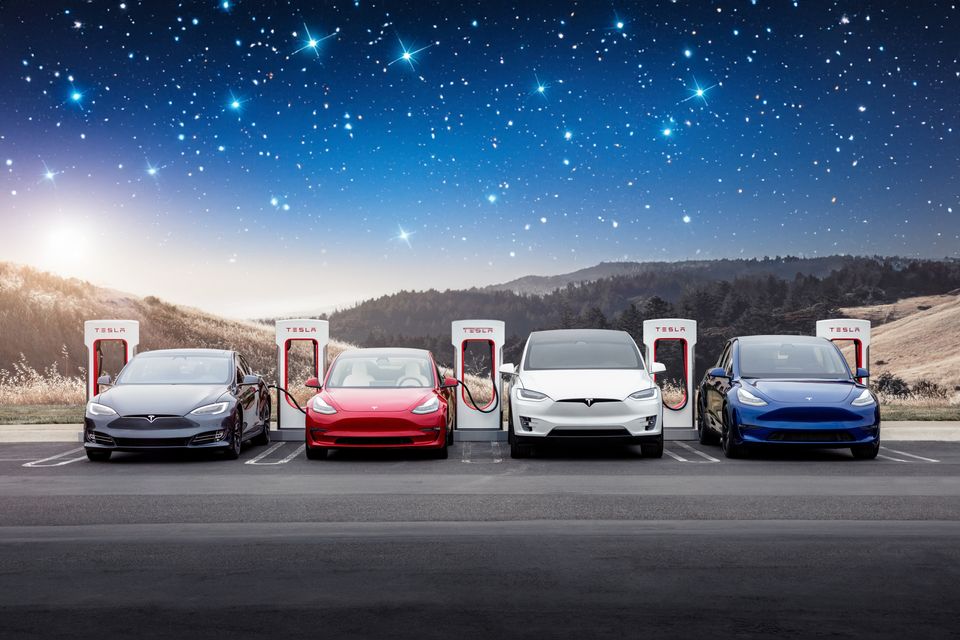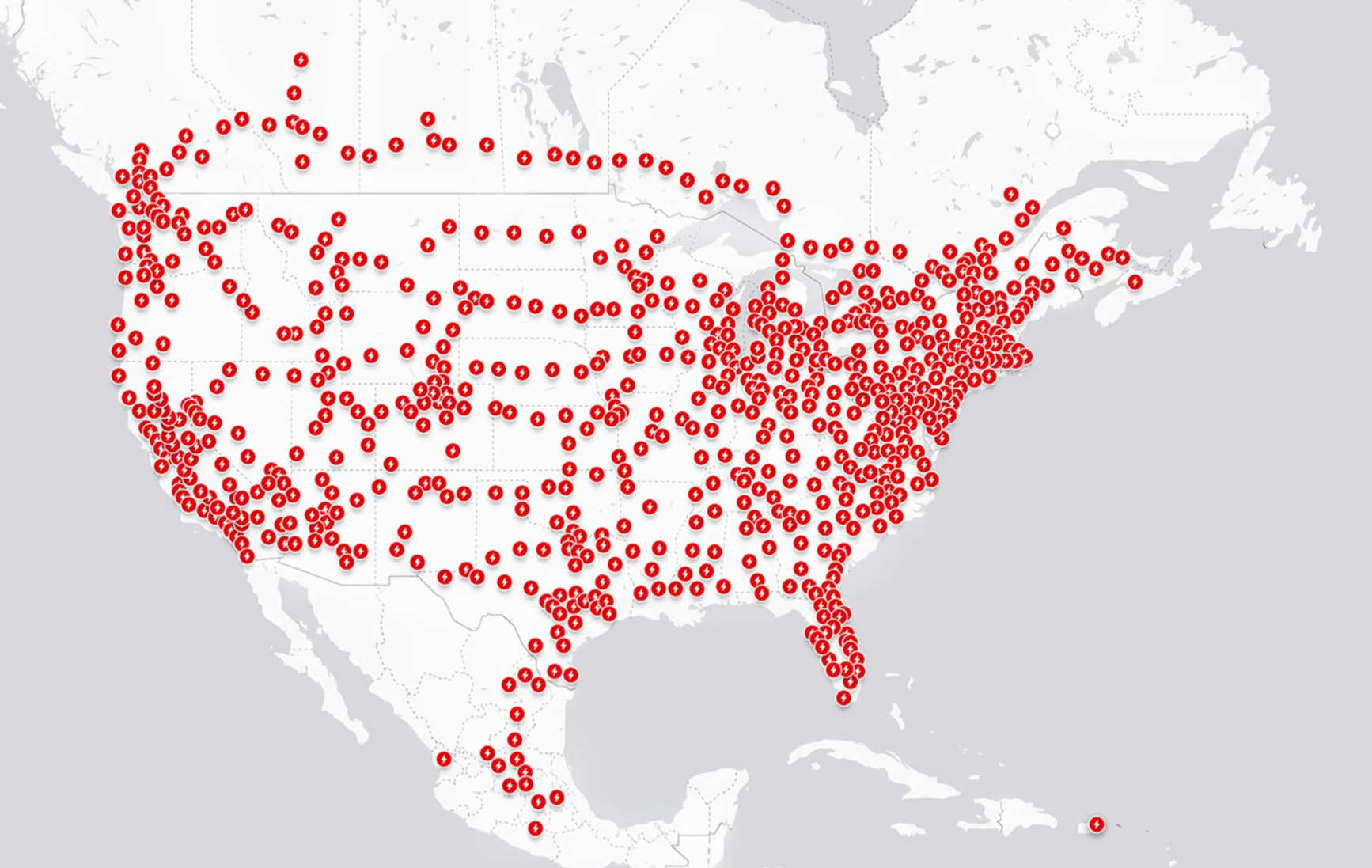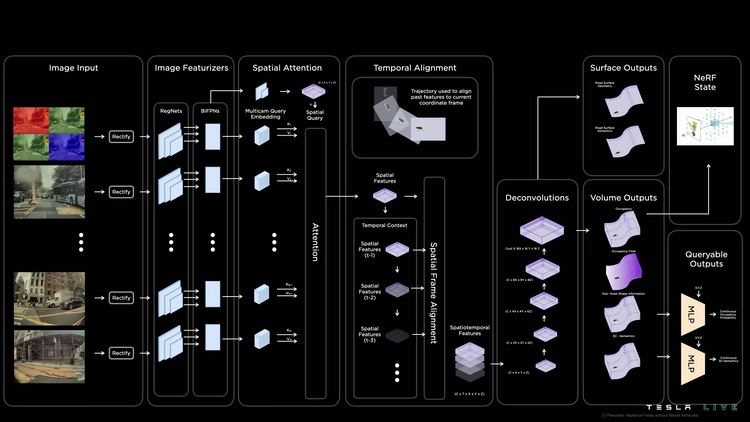Tesla Opens Up Superchargers to Competitors: Bad Move?

In the last few weeks Ford, then GM, announced that they would adopt the Tesla-invented NACS charger and allow their vehicles to use Tesla’s Supercharger network.
A friend asked:
“Why is Tesla giving away one of its biggest competitive advantages? They want to boost earnings by getting cash up front?”
The question has a lot of premises embedded in it. To attack the second part first, I don’t believe there is any upfront cash being exchanged, and Tesla doesn’t need cash since it generates a lot of it internally (more below).
On the first part of the question, is Tesla’s charging network one of its biggest competitive advantages? I would argue that it’s one of Tesla’s competitive advantages. However, it is not the biggest one. The biggest one, in my view, is the fact that Tesla is the second most desired company to work for by engineering grads (after SpaceX) coupled with its innovation rate. That combination is hard to beat, and the advantages compound over time.
But back to the Supercharger question: in sharing its charging infrastructure, does Tesla increase this competitive advantage or decrease it?
Let’s look at what Elon Musk has said over the years for clues. In 2015, during a press conference in Germany, Musk said:
Our Supercharger network is not intended to be a walled garden.
It’s intended to be available to other manufacturers if they’d like to use it. The only requirements are that the cars must be able to take the power output of our Superchargers, and then just pay whatever their proportion their usage is of the system. We’re actually in talks with some manufacturers about doing just that, and it will be exciting to share that news.
The general philosophy of Tesla is to do whatever we can to accelerate the advent of electric cars. Electric cars…are really the key to a sustainable future. It’s incredibly important that we transition away from fossil fuels.
The CEO of one European car company, not a German car company, has approached us recently about doing exactly that, and we’re super supportive of anyone who wants to do that.
In 2018, during Tesla’s Q1 earnings call, Musk was asked about this again, and said:
We've always said that we're—this is not intended to be a walled garden, and we're happy to support other automakers and let them use our Supercharger stations. They would just need to pay the share of the cost proportionate to their vehicle usage. And they would need to be able to accept our charge rate or at least—and our connector, at least have an adaptor to our connector. So this is something we're very open to, but so far none of the other car makers have wanted to do this. But it's like not because of opposition from us. This is not a walled garden, trying to make a moat.
When asked by the analyst why not create a moat out of this, Musk gave the following reply. Keep in mind that Musk is a keen student of history and has even had a great conversation on military history with Hardcore History’s Dan Carlin which is worth listening to. Here is Musk’s reply (my emphasis added):
First of all, I think moats are lame. I mean, they're like nice and sort of quaint in a vestigial way. But like if your only defense against invading armies is a moat, you will not last long.
What matters is the pace of innovation.
That is the fundamental determinant of competitiveness. And for any given company, if the rate of innovation—let's say, like our competitors, maybe they come out with something new every 6 years. We're maybe every 2 to 3 years.
So if our innovation is, let's say, twice that of any given competitor, then it is simply—this is true of, generally, of companies in any industry. Whichever company has the highest rate of innovation, unless that company is actively killed by its competitors in some way that's nefarious or shoots itself in the foot, it will, at some point, exceed those competitors.
Like this is obvious that this would occur with Amazon or Walmart, because Walmart's rate of innovation was negligible and Amazon's was very high. The outcome was obvious a long time ago.
In Tesla’s Q2 2021 earnings call, the topic came up again. How would Tesla open up its charging network? Musk replied:
We're currently thinking it's a real simple thing where you just download the Tesla app and you go to a Supercharger, and you just indicate which stall you're in. So you plug in your car even if it's not Tesla, and then you just access the app and say turn on this stall that I'm in for how much electricity. And this should basically work with, I think, almost any manufacturer's cars.
There will be a time constraint. So if the charge rate is super slow, then somebody will be charged more because the biggest constraint at the Superchargers is time, how occupied is the stall. And we'll also be smarter with how we charge for electricity at the Superchargers. So rush hour charging will be more expensive than off hours charging because there are times when the Superchargers are empty and times when they're jampacked. And so it makes sense to have some time-based discrimination.
I think we do want to emphasize that it is—our goal is to support the advent of sustainable energy. It is not to create a walled garden and use that to bludgeon our competitors, which is sometimes used by some companies.
It’s clear that from Musk’s point of view, he doesn’t see the Supercharger network as a big competitive advantage. He’s said many times that unless Tesla wins both in electrification and autonomy, it won’t have a future.
Drew Baglino, Tesla’s SVP of Powertrain and Energy Engineering chimed in on the business case:
I think it's also important to comment that increasing the utilization of the network actually reduces our costs, which allows us to lower charging prices for all customers, makes the network more profitable, allows us to grow the network faster. So that's a good thing there. And no matter what, we're going to continue to aggressively expand the network capacity, increasing charging speeds, improving the trip planning tools to protect against site congestion using dynamic pricing, as Elon mentioned, and just continuing to focus on minimum wait time for all customers.
What Baglino is describing there is a clear flywheel effect and perhaps even a winner-take-all dynamic.
Imagine if Tesla’s NACS connector became a standard, and then, imagine if all automakers adopted that standard and decided to allow their vehicles to take advantage of Tesla’s Supercharger infrastructure?
What would this do? This would allow Tesla to earn a fee on the ICE to EV conversion, to essentially become an EV tollbooth.

Following these comments, in November 2022, Tesla officially opened up the charging standard they created (NACS) by offering the design and specification files for download.
On May 25 of this year, one day before he announced that Ford would be adopting Tesla’s charging infrastructure and NACS connector, Ford CEO Jim Farley made the following interesting comments at an industry conference (emphasis added):
So I believe we're, again, like maybe in the first inning of the infrastructure. I think we're most concerned about the grid. On the infrastructure side, I think it's room for some collaboration between the auto companies, which is totally unnatural for us.
I keep thinking like in the 1800s, how do the train companies agree on the gauge. The Western railroads had narrow gauge to go around corners. And then the plains gauges were much broader, wider for cargo. Someone had agree on what gauge you use. Right now, we have 2 different plugs, for example, NASC, that Tesla invented; and then SAE that invented the CCS are completely different, and it seems totally ridiculous that we have an infrastructure problem, and we can't even agree on what plug to use.
So I think we need to start—I mean I think that first step is to work together in a way we haven't, probably with the new EV brands and the traditional old companies. That's one.
On May 26, Ford issued its press releases with the announcement, and Jim Farley joined Elon Musk in an interesting Twitter Spaces conversation.
Why didn’t Farley build his own Supercharger network? According to an interview with MotorTrend:
It was too expensive… We're starting 10 years too late. So we had to use Electrify America and EVgo and they're going to have to completely rebuild their networks. It's not competitive.
Ford and GM combined have a 30 percent market share of new vehicle sales in the US. With Tesla, they have a 72 percent market share in EVs. The announcement that both OEMs have joined Tesla’s Supercharger network makes it much more likely that other OEMs will have to join as well because building their own networks will simply be too expensive now that there is a scaled alternative embraced by large incumbents.
What These Announcements Mean for Tesla
As Baglino noted back in 2021 (see above), there is a clear flywheel effect for Tesla: more utilization begets improvements and lower costs, which begets more utilization, in a virtuous circle.
In addition, Ford and GM vehicles’ navigation systems will now have the locations of all Tesla Supercharger locations. Customers will be directed to Tesla’s locations and will pay Tesla for the privilege. Ford and GM will advertise the fact that their cars can use Tesla’s infrastructure, costing Tesla nothing.
Meanwhile, Tesla will earn profits from the use of their infrastructure, furthering their ability to scale it. Tesla doesn’t lack capital for expansion: it generated $14 billion of GAAP EBIT last year and deployed only $7.1 billion in capital expenditures. As of Q1 2023, the company had $21.1 billion in net cash on its balance sheet. Over the six quarters Tesla has grown the number of Supercharger connectors at an average of 35 percent year over year.
But it certainly won’t hurt to have competitors paying them to expand further!
Over time, Tesla will have the dominant, if not the only, Supercharging network in America, if not in most countries.
ForwardCap summarized this news well:
Tesla opening up their charging network results in:
— Forward Cap (@forwardcap) May 26, 2023
1. Sticky ancillary revenue stream
2. Solves biggest issue with EVs, accelerating EV adoption and hurting competitor ICE business
3. Free advertising as customers of other brands become familiar with Tesla tech
I don’t see how this move is a negative for Tesla. Sun Tzu is often credited with the phrase “Keep your friends close; keep your enemies closer.” By allowing Ford and GM to use Tesla’s Superchargers, Tesla removes any remaining incentive those OEMs had to build competing networks. It’s a lot easier (not to mention cheaper) to join Tesla’s network than to build an alternative. And it makes it that more likely that other OEMs like VW and Toyota will soon join.
This therefore increases the probability that Tesla will control the dominant Supercharger network and own all the “gas stations” or “toll booths” of the EV era.


